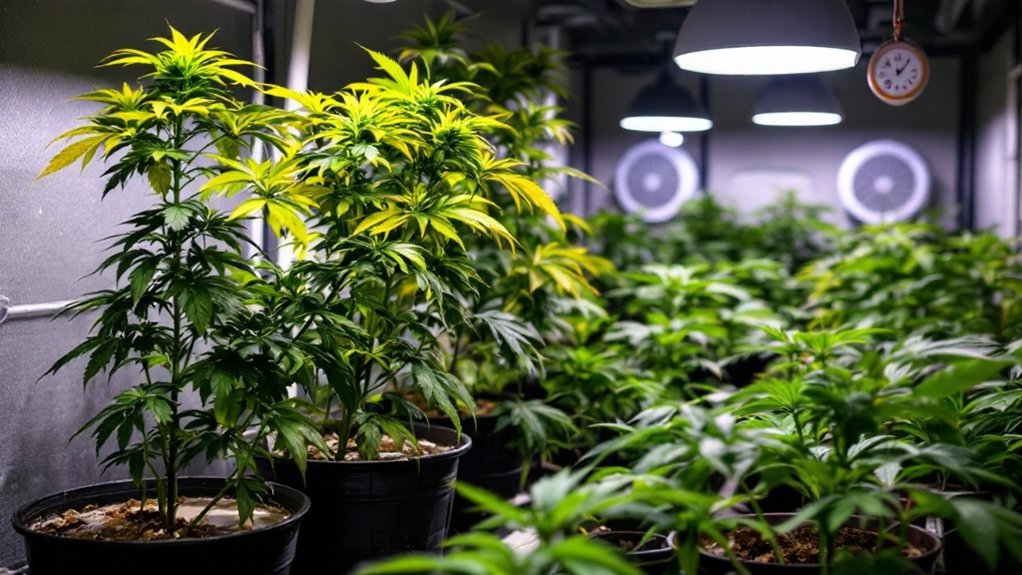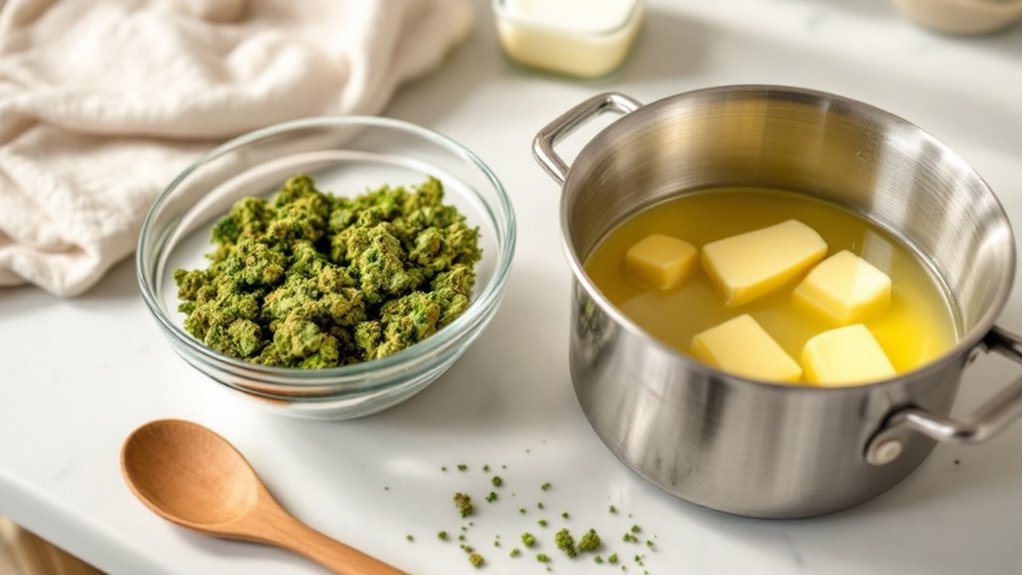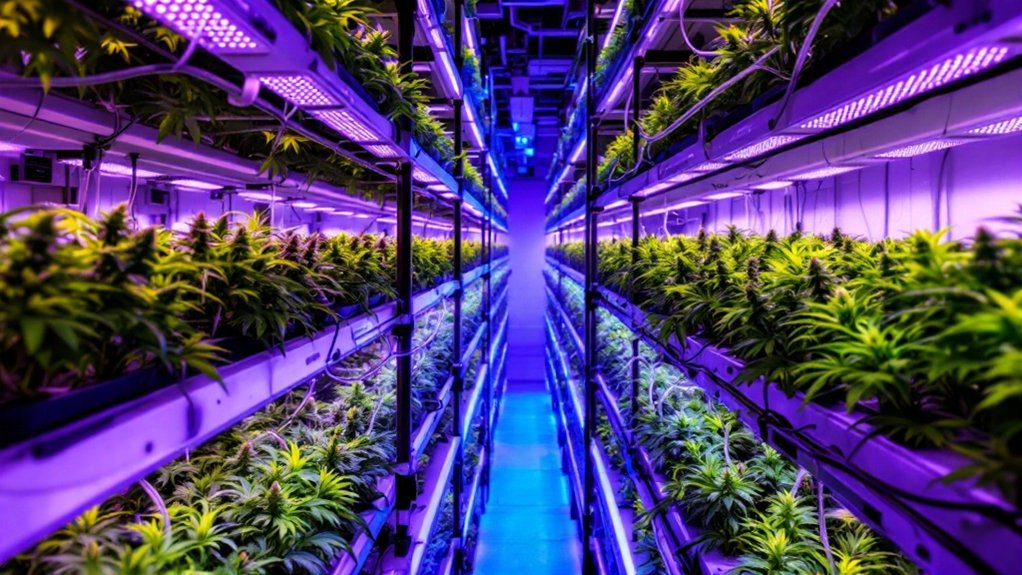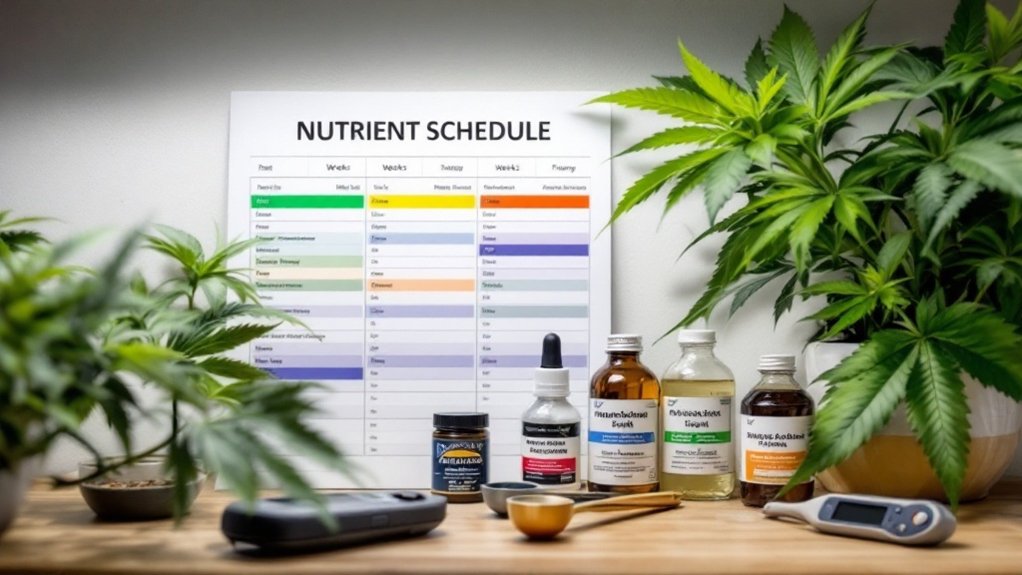Common cannabis cultivation mistakes include overwatering, poor air circulation, and improper lighting placement. Successful growers maintain ideal environmental conditions through consistent monitoring of temperature, humidity, and pH levels. Inadequate planning, poor soil quality, and incorrect nutrient management frequently lead to crop failures. Uncalibrated equipment and growing too many strains simultaneously complicate the process unnecessarily. Understanding strain-specific requirements and proper drainage systems creates the foundation for healthy plants and abundant harvests.

While cannabis cultivation continues to evolve with advancing technology and techniques, growers often encounter considerable challenges that can compromise their harvests. Overwatering is a common beginner mistake that leads to root rot and nutrient deficiencies that stunt plant development. Improper watering practices rank among the most common errors, with overwatering leading to root rot and nutrient deficiencies that stunt plant development. Successful cultivators typically wait until the top inch of soil is dry before watering and guarantee proper drainage to prevent water accumulation at the root zone. Ensuring optimal light distances is also important to support healthy growth and prevent unnecessary stress on the plants.
As cannabis cultivation technology advances, mastering proper watering remains fundamental to preventing devastating root issues that can destroy entire crops.
Environmental control issues frequently plague cannabis operations when growers fail to implement adequate airflow systems. Poor air circulation creates conditions favorable for mold and bud rot, while positioning LED lights too close to plants causes light stress that inhibits growth. Temperature and humidity imbalances throughout growth cycles can greatly reduce both yield quality and quantity, making consistent environmental monitoring essential. Ventilation systems that provide proper airflow are crucial for preventing excess heat and humidity buildup that can lead to plant diseases.
Insufficient planning and research contribute to cultivation failures as the industry continues to evolve rapidly. Growers who rush into production without understanding regulations or researching strain-specific requirements often experience unexpected challenges. This lack of preparation frequently results in inefficient operations and financial losses that could have been avoided through proper research.
Soil and nutrient management problems manifest when cultivators use poor quality growing media or fail to maintain consistent feeding schedules. Incorrect pH levels (optimally 6.0-6.5 for soil) block nutrient uptake regardless of fertilizer quality, while poor drainage restricts root development. These issues compound over time, resulting in nutrient deficiencies that become increasingly difficult to correct.
Equipment selection and calibration errors introduce variables that undermine cultivation success. Uncalibrated pH and EC meters provide inaccurate readings that lead to improper adjustments, while untested tap water may introduce harmful chemicals to sensitive plants. Choosing inappropriate lighting systems increases operational costs while potentially reducing yields. Proper lighting is essential, as it impacts both the vegetative and flowering stages of plant growth.
Genetic selection miscalculations and improper plant management further complicate cannabis cultivation. Growing too many strains simultaneously creates management difficulties, while overcrowding plants reduces airflow and increases disease risk. Poor space planning limits operational efficiency and hampers potential expansion.
Successful cultivators typically match genetics to their specific growing environment and implement consistent monitoring practices to identify problems during early, treatable stages. Without proper strain selection and adequate spacing, growers face reduced yields and compromised product quality regardless of other cultivation practices.
Frequently Asked Questions
How Do I Test and Balance the Ph Level in My System?
Some growers prefer a slightly lower pH during the vegetative stage, around 5.8 to 6.0, to promote vigorous growth.
During flowering, a pH between 6.0 and 6.3 may be preferred to support bud development.
For hydroponics systems, maintaining pH between 5.5-6.5 is essential.
Runoff testing involves collecting drainage water, while slurry tests mix substrate with distilled water before measurement.
After testing, small amounts of pH up or down solutions are added incrementally to achieve the target range, always retesting after adjustments.
Can I Use Tap Water for My Cannabis Hydroponic Setup?
Tap water can be used for cannabis hydroponics, but requires treatment before application.
Municipal water typically contains chlorine and chloramines that kill beneficial bacteria essential for plant health. Cultivators should allow tap water to sit for 24 hours to evaporate chlorine and adjust the pH to approximately 6.5 using appropriate solutions.
Water testing is necessary to determine mineral content, as geographic location greatly affects water quality. For advanced hydroponic systems, reverse osmosis filtration yields more consistent growing results.
How Often Should I Change the Nutrient Solution Completely?
Growers should change hydroponic nutrient solutions completely every 7-14 days, depending on several variables.
Smaller reservoirs typically require more frequent changes than larger ones. Plants in active growth stages deplete nutrients faster, necessitating more regular replacements.
Between complete changes, daily monitoring of water levels, PPM readings (800-1500 ideal range), and pH values remains essential.
Environmental factors such as temperature and light exposure also influence solution degradation rates, potentially accelerating the need for replacement.
What’s the Ideal Temperature for the Root Zone in Hydroponics?
The ideal temperature for cannabis root zones in hydroponics ranges from 68-72°F (20-22°C), with peak growth occurring at the lower end of this spectrum.
Maintaining temperatures within this range guarantees proper oxygen dissolution in the nutrient solution and supports healthy root development.
Temperatures exceeding 78°F (25°C) reduce dissolved oxygen levels and increase pathogen proliferation risk, while temperatures below 66°F (18°C) impair nutrient uptake efficiency and enzymatic activity within the roots.
How Do I Prevent and Treat Algae Growth in My System?
Algae growth in hydroponic systems can be prevented by maintaining water temperatures between 21-23°C and blocking all light from reaching the nutrient solution with opaque materials.
When algae appears, treatment options include applying hydrogen peroxide at 3ml per gallon of solution or copper sulfate at 0.25 parts per million.
Regular system maintenance, including daily checks of reservoir conditions and proper oxygenation, helps reduce conditions favorable for algae proliferation while supporting plant health.








